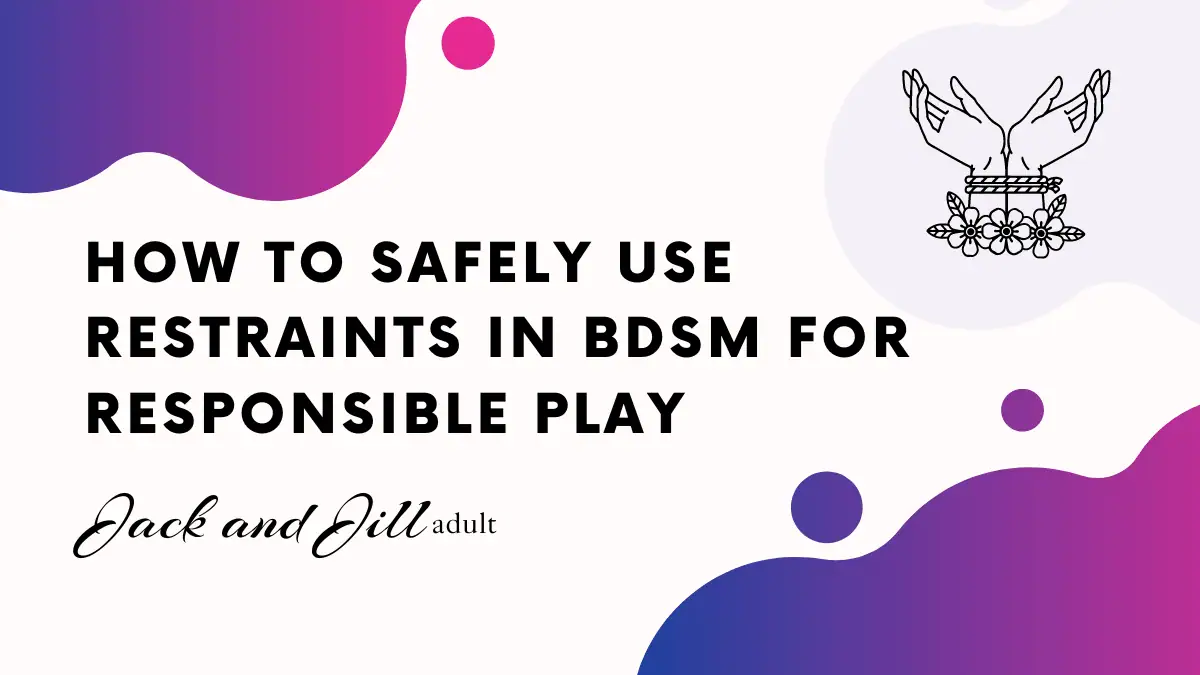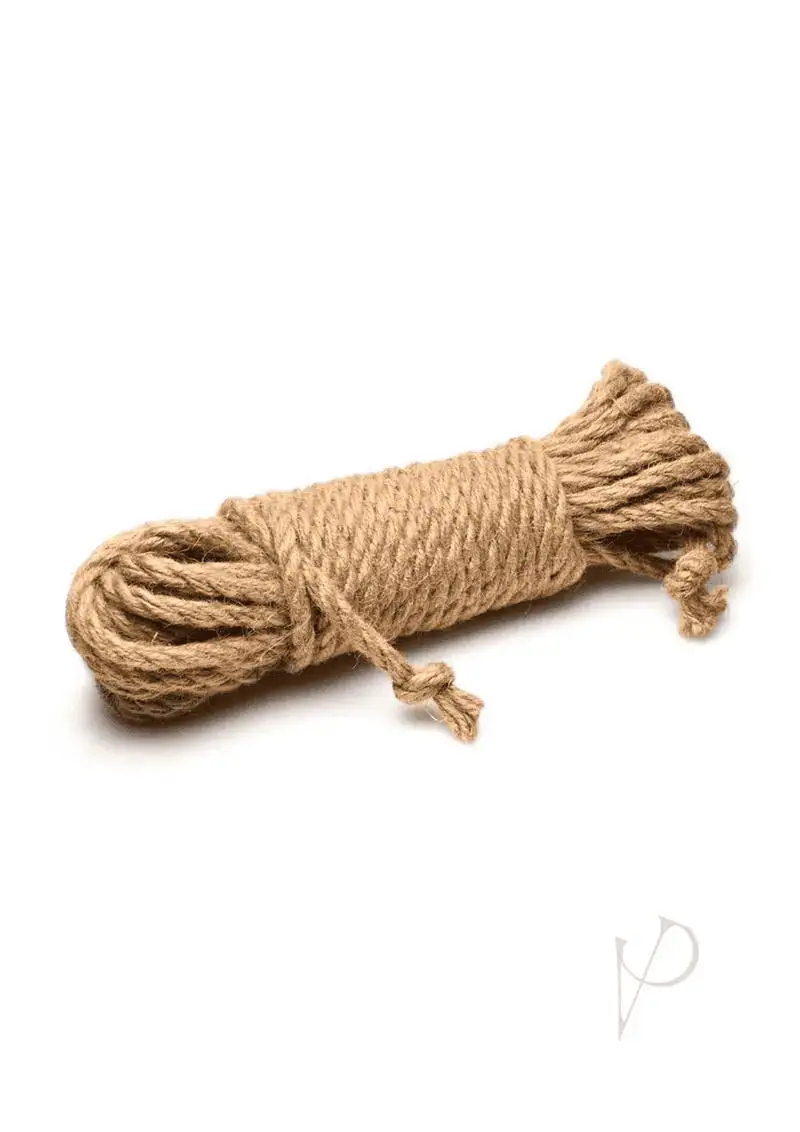
How to Safely Use Restraints in BDSM for Responsible Play
Wondering how to safely use restraints in BDSM? You’re not alone. The thrill of bondage comes with a responsibility to prioritize safety and consent. In this guide, we’ll explore essential tips to ensure that your restraint play is not only exhilarating but also respects the well-being of all involved. From the suitable materials and techniques to the importance of communication and aftercare, we’ve got you covered. Buckle up for a deep dive into responsible BDSM play.
Key Takeaways
- Before diving into restraint play, consent and communication are crucial—establish safe words or signals and chat about boundaries over a relaxed conversation.
- Implement safety measures consistently, like the two-finger rule, to ensure restraints aren’t too tight, use suitable materials, and prepare quick-release tools in an emergency.
- Remember the aftercare post-BDSM scene; it’s vital for emotional and physical recovery, helping to ground and comfort partners after intense play.
Navigating Consent and Communication
In the realm of BDSM, consent isn’t just sexy—it’s non-negotiable. Before any ropes are tied or cuffs are fastened, obtaining explicit consent is the bedrock of a thrilling yet safe experience. If your wife wants to be tied up and you’re new to restraint play, this is where the conversation should begin—open, honest, and grounded in trust. Imagine sitting down with your partner, sipping on your favorite beverages, and having an open-hearted chat about your deepest desires and firm boundaries in your sex life. This kind of conversation paves the way for trust and mutual satisfaction.
It’s essential to discuss what you’re eager to try and what’s off-limits. Establishing a safe word or signal before the play begins creates a silent alarm system that ensures everyone’s on the same page. This isn’t just about preventing mishaps—it’s about weaving a more profound connection that enhances the intensity of your shared adventure.
Establishing Safe Words and Signals

Master Series Tied Up Jute Bondage Rope 25` Tan
Imagine being bound and blissful in the throes of passion, but something doesn’t feel right. That’s where safe words and signals come into play—your very own escape hatch. Safe words are a silent understanding, a trust pact that says, “I care about your well-being” more eloquently than any love poem could. But remember, safe words aren’t a reflection of mistrust; they’re akin to a safety net that allows you to fly higher with the peace of mind that you won’t fall.
In the heat of the moment, especially when the submissive partner might be drifting into a ‘subspace,’ regular verbal check-ins are as crucial as safe words. When the mouth is gagged, or the scene calls for silence, non-verbal signals become your voice. A squeeze of the hand, a tap, or a snap of the fingers can speak volumes about your comfort levels. Some couples adopt the stoplight system—‘green’ for good to go, ‘yellow’ for caution, and ‘red’ for a full stop—painting a clear picture of each partner’s status. It’s a dance of dominants and submissives where both hold the power to say “enough,” ensuring that every act of surrender is a choice, not a consequence. This delicate balance between control and submission can be seen as a power play, where communication is key to maintaining a safe and enjoyable experience.
Preparing for Restraint Play: Safety Essentials

Whipsmart Glow in the Dark Bed Restriant W/cuff
Diving into restraint play, such as BDSM play, is like stepping onto a rollercoaster—exhilarating, yes, but you always make sure the safety bar is snug before the ride begins. In the world of bondage play, the safety bar comes in the form of positioning, material choice, and the ever-important quick-release mechanisms. Just like with anal play, safety and communication are vital to ensuring a pleasurable experience for all involved.
Have you ever heard of the two-finger rule? It’s the simple yet critical practice of ensuring that you can slip one or two fingers between the restraint and the skin—this isn’t just for comfort; it’s to safeguard blood flow and prevent nerve damage. This is very important for all BDSM collar types as well. Ignoring this tiny detail can lead to various issues, from tingling and numbness to loss of consciousness to more severe motor impairments.
And let’s not forget about the materials—some, like duct tape or zip ties, might be handy in a pinch for household repairs, but they’re a no-go for restraints due to the risk of skin damage and difficulty in removal. Instead, consider using bondage tape for a safer and more enjoyable experience. The stage is set for a night of unforgettable play, but only when these safety essentials are in place.
Choosing the Right Materials
Selecting the suitable material for your bondage restraints is like picking the perfect wine to complement a meal—it needs to be just right. For the connoisseurs of rope bondage, natural fibers like jute and hemp are the go-to choices. Their rough texture and low elasticity grip the skin with just enough friction to hold knots securely without slipping. But it’s not just about not slipping; the ropes you choose need to handle the tension of restraint without breaking, all while being kind to your body.
Using specialty bondage rope is like trusting a seasoned pilot to fly the plane; it’s designed to keep you safe while you soar to new heights of pleasure.
Positioning Matters
Where you place those restraints can be the difference between a night of ecstasy and an unwanted trip to the emergency room. Avoiding undue pressure on sensitive areas, such as the radial nerve, is a safety mantra that should be chanted before any session. Knowing the no-rope zones is like understanding the rules of the road; it prevents accidents and keeps everyone cruising along safely.
For those being restrained, adopting positions that don’t demand Olympic-level flexibility, like kneeling, prevents pressure on the joints and keeps the submissive from being face down, allowing for easier breathing and communication. Ultimately, it’s about finding comfortable and secure positions—discomfort should only be part of the play if that’s your thing.
Quick Release Mechanisms
Ever watched a magician escape from a straitjacket? That’s the kind of swift release you want in your BDSM toolkit, especially when using a ball gag. Quick release mechanisms are the unsung heroes of bondage, allowing you to free your partner faster than you can say “abracadabra” in case things go awry.
Safety scissors should be as much a staple in your play drawer as your favorite toys—always within reach, ready to cut through any knot or restraint that’s causing distress. Having the right tools isn’t just about preparation; it’s a pledge of protection that says, “Your safety is my top priority.”
Exploring Different Types of Restraints

The world of bdsm restraints and sex toys is as varied as the stars in the night sky, each offering a unique constellation of sensation and control. Wrist cuffs, those iconic symbols of kink, come in flavors from velvety silicone to stern, lockable leather, each with its allure and suitability for beginners and veterans alike. Some handcuffs can play well with other accessories, turning a simple restraint into a full-body experience that leaves the submissive deliciously at the mercy of their partner.
Spread those wings—or rather, legs—with spreader bars that showcase vulnerability and exposure, while adjustable ankle cuffs ensure that the fit is just right. For a more elaborate setup, bed restraints can transform an ordinary bed into a playground of pleasure, with straps and harnesses designed to tease and tantalize the restrained partner, including ankle restraints for added security.
And for those who like to keep things standing, door restraints can turn any doorway into a stage for a standing ovation-worthy performance. Each type of restraint offers a different flavor to the BDSM feast, and it’s up to you to create the perfect recipe for ecstasy.
The Art of Rope Bondage
Rope bondage is the canvas where the art of restraint is painted in bold strokes of creativity and skill. Shibari, or kinbaku, is not just about tying someone up; it’s a dance of rope and flesh that can be as visually stunning as it is erotically charged. During a bondage scene, beginners often start with the single-column tie—a simple yet elegant knot that’s the cornerstone of rope bondage mastery. As your fingers learn the language of the ropes, you’ll discover a world of intricate harnesses and gravity-defying suspensions that can take your breath away—literally and figuratively.
But remember, with great complexity comes a greater need for caution. Full-body suspensions are the high-wire act of bondage, requiring a keen understanding of safety to prevent nerve injuries. Body harnesses can be used in these situations to help distribute the load. Doubling the rope can spread the load, making the scene safer and more comfortable for the bound partner. And for the ropes to embrace the body without pressing too hard, even tension is the secret ingredient to a successful tie.
Resources like online tutorials can be treasure troves of knowledge for those eager to learn the ropes—pun intended.

Strict Extreme Adjustable Leather Lined Sling Black
Implementing Sensory Deprivation Responsibly
When the lights go out, the other senses take center stage. Sensory deprivation, like the simple act of blindfolding, can amplify the remaining senses, transforming every touch into an electric spark of pleasure. It introduces an intimate and intense power dynamic, where one partner wields the scene’s control and the other surrenders to a heightened state of vulnerability.
Starting with a whisper of touch and crescendoing to a symphony of sensation allows the blindfolded partner to adjust, making each caress a revelation that sends shivers down the spine. Sensory deprivation isn’t just about what’s taken away; it’s about what’s awakened—the anticipation, the surprise, the sheer intensity of not knowing where the next sensation will come from.
Aftercare: Ensuring Comfort and Safety Post-Scene
After the storm of sensation comes the calm of aftercare—the soothing balm that heals the body and mind after the intensity of a BDSM scene. It’s the time to:
- snuggle
- talk
- care for each other in the most tender of ways
- nurture the connection that just deepened through play
Aftercare addresses the emotional whirlwind that can follow a session, from euphoria to vulnerability, ensuring everyone involved steps back into the world feeling grounded and cared for.
The phenomenon of ‘sub-drop,’ where the body’s chemicals take a dip after the high of a scene, makes aftercare not just a nice-to-have but an essential part of any BDSM encounter. Offering a blanket, a glass of water, or a kind word are simple gestures that can mean the world to someone coming down from the heights of sub-space. It’s the gentle landing after a flight into the unknown, a reminder that in the end, BDSM is a journey of care as much as it is one of constraint.
Summary
As our journey through the knotty world of BDSM and restraints comes to a close, remember that the true thrill lies not just in the play itself but in the care with which it’s conducted. From establishing consent and communication to selecting suitable materials and implementing quick-release mechanisms, every aspect of restraint play is a testament to the trust and connection between partners. Sensory deprivation and the art of rope bondage add depth to the experience, while aftercare ensures that everyone emerges from the scene feeling safe and cherished. Embrace these tips, and you’ll find that the most intense and satisfying encounters are as safe as steamy.

Strict Thigh Sling With Wrist Cuffs Black
Frequently Asked Questions
What are safe words, and why are they essential in BDSM?
Safe words are crucial in BDSM as they allow participants to express discomfort or the need to stop the activity, ensuring the safety and consent of all parties involved. They are prearranged signals that help maintain trust and respect boundaries.
Can you explain the ‘two-finger rule’ in the context of restraints?
When applying restraints, leave enough space to fit one or two fingers between the restraint and the skin. This helps prevent restricted blood flow and reduces the risk of nerve damage and circulatory problems.
Why is it important to choose suitable materials for restraints?
Choosing the right materials for restraints is crucial to avoid injuries like skin abrasions, nerve damage, and circulation issues. The materials should be skin-safe, provide appropriate tension, and be easily removed in emergencies.
What is aftercare, and how does it contribute to a BDSM scene?
Aftercare is crucial after a BDSM scene. It helps participants return to a state of comfort and normalcy by providing emotional and physical support, such as conversation, hydration, and warmth. It helps attendees attend to each other’s needs and contributes to a positive and caring experience.
Can beginners participate in rope bondage, and how can they learn safely?
Yes, beginners can safely participate in rope bondage by starting with basic knots like the single-column tie and gradually learning more complex techniques while prioritizing safety throughout their learning process. Remember to seek credible resources and guidance.

